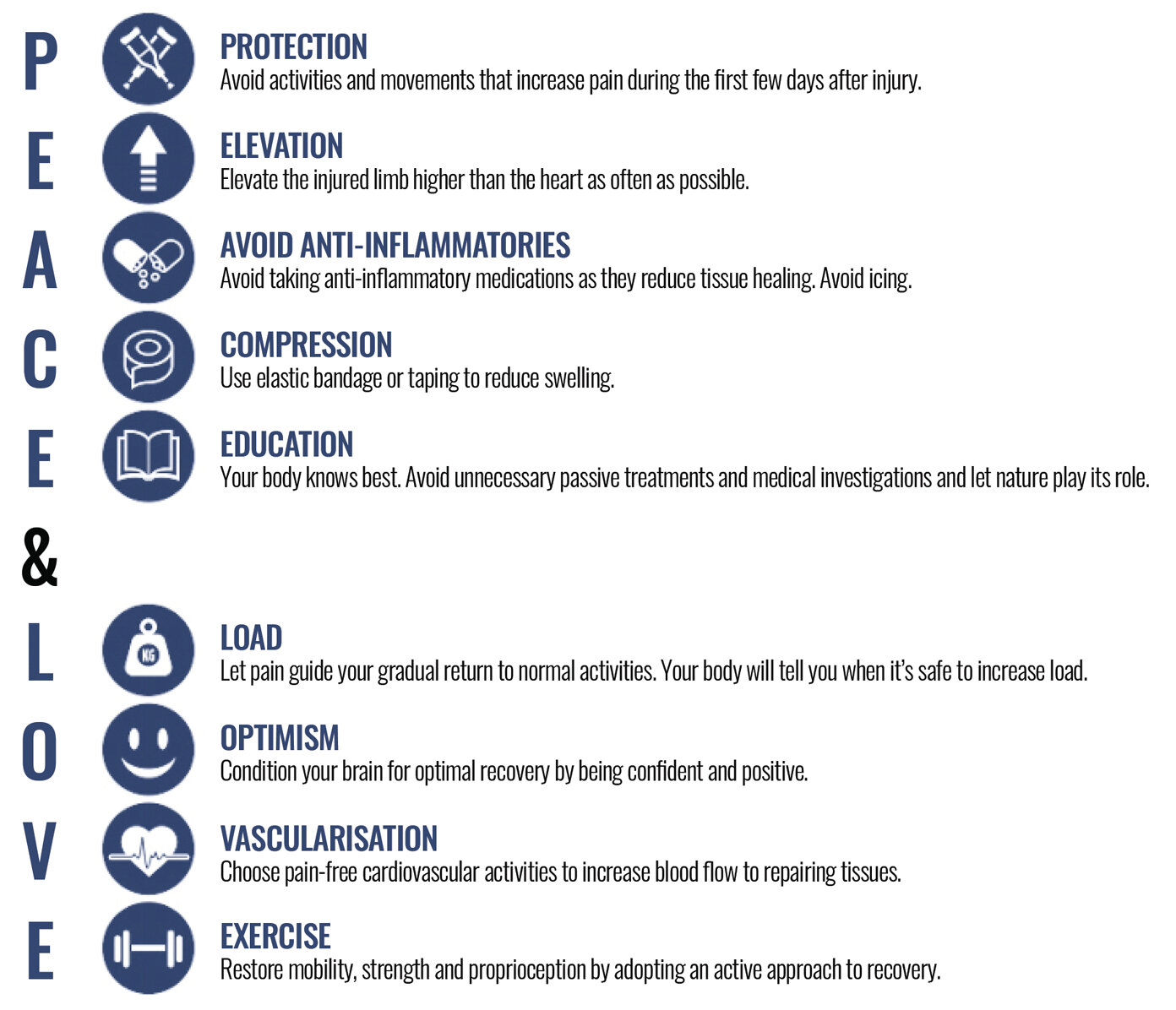Acute injury - time to ditch the R.I.C.E principle
Acute muscle strains and joint sprains are some of the most common lower limb injuries we see as physiotherapists especially in the sporting population involved in high impact sports and change of direction. There are many causes and contributing factors to muscle and joint injuries and the rehabilitation of soft-tissue injuries can be a complex process. As most of these injuries tend to happen on the sporting field, throughout generations the age-old principle of R.I.C.E rest, ice, compression and elevation has been the mainstay of acute injury management. However, does this reflect the most current and best practice management strategies? How can we continue to maximise our recovery during the subacute and chronic stages of tissue healing? Is it time to ditch the trusty ice pack?
BJSM (British Journal of Sports Medicine) in 2019 introduced a new contemporary acronym that is challenged the status quo. Their protocol is said to encompass the rehabilitation continuum from immediate care (PEACE) to subsequent management (LOVE). PEACE & LOVE not only considers the acute stages of tissue healing but also place emphasis on the importance of educating patients and addressing the impact the injury may have on the psychological and social aspects of the individual. Let’s dissect this framework in a little more detail.
Following the initial moment of injury – let PEACE guide your approach to your care.
P – Protect, unload and restrict movement for the first 1-3 days, while avoiding rest as rest may compromise tissue strength and quality.
E – Elevate the injured limb to promote excessive swelling to flow out of the injured tissues
A – Avoid anti-inflammatory modalities, as various phases of inflammation actually assist in the repair of damaged tissues. Avoid ice, albeit a strong method of analgesia, ice may have negative effects on the overall healing process by disrupting the natural inflammatory cascade.
C – Compression using taping/bandages helps limit the spread of oedema into surrounding tissues
E – Education from a health professional will allow the injured athlete/person see the advantages of adopting an active approach to their recovery to avoid unnecessary and over treatment.
Once the first few days of injury have passed. It is time to show those tissues some LOVE.
L – Loading of the tissue promotes an active approach to recovery. Without exacerbating symptoms loading promotes repair, remodelling and builds tissue tolerance and capacity.
O – Optimism is an overlooked component of care as people often underestimate the power of a positive outlook on promoting good outcomes. Catastrophising, or feelings of depression in relation to injuries can provide significant barriers to your recovery.
V – Vascularisation Cardiovascular exercise should represent a significant aspect in the management of musculoskeletal injuries. Pain-free aerobic exercise and mobilisation should be started a few days after injury to enhance motivation and improve physical function facilitating return to work/play.
E – Exercise assists in restoring mobility, strength and proprioception even in the early stages following injury. Whether dealing with an ankle sprain, or a hamstring injury it is important to consider both the short-and-long term outcomes and utilise appropriate exercises to ensure optimal repair during recovery as well as reducing the chances of recurrent injuries.
Get in touch for further details on how this framework can be applied to your injury.
References
Dubois B, Esculier J. Soft-tissue injuries simply need PEACE and LOVE. British Journal of Sports Medicine 2020;54:72-73.
Peace and Love Principle. (2020). Retrieved 20 August 2020, from https://www.physio-pedia.com/Peace_and_Love_Principle
I, Wiles L, Waller R, Goucke R, Nagree Y, Gibberd M, Straker L, Maher CG, O’Sullivan PP. What does best practice care for musculoskeletal pain look like? Eleven consistent recommendations from high-quality clinical practice guidelines: systematic review. British journal of sports medicine. 2020 Jan 1;54(2):79-86
Bleakley CM, Glasgow P, MacAuley DC. PRICE needs updating, should we call the POLICE?British Journal of Sports Medicine 2012;46:220-221.


